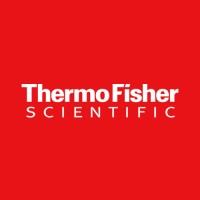CD19 / NovaFluor Blue 660 / 40S / eBio1D3 (1D3)
Product Details
| Description | CD19 Monoclonal Antibody (eBio1D3 (1D3)), NovaFluor™ Blue 660-40S, eBioscience™ | |
|---|---|---|
| Conjugate | NovaFluor Blue 660 / 40S | |
| Clone | eBio1D3 (1D3) | |
| Target Species | Mouse | |
| Applications | FC | |
| Supplier | Thermo Fisher Scientific | |
| Catalog # | Sign in to view product details, citations, and spectra | |
| Size | ||
| Price | ||
| Antigen | ||
| Host | ||
| Isotype |
About CD19
This gene encodes a member of the immunoglobulin gene superfamily. Expression of this cell surface protein is restricted to B cell lymphocytes. This protein is a reliable marker for pre-B cells but its expression diminishes during terminal B cell differentiation in antibody secreting plasma cells. The protein has two N-terminal extracellular Ig-like domains separated by a non-Ig-like domain, a hydrophobic transmembrane domain, and a large C-terminal cytoplasmic domain. This protein forms a complex with several membrane proteins including complement receptor type 2 (CD21) and tetraspanin (CD81) and this complex reduces the threshold for antigen-initiated B cell activation. Activation of this B-cell antigen receptor complex activates the phosphatidylinositol 3-kinase signalling pathway and the subsequent release of intracellular stores of calcium ions. This protein is a target of chimeric antigen receptor (CAR) T-cells used in the treatment of lymphoblastic leukemia. Mutations in this gene are associated with the disease common variable immunodeficiency 3 (CVID3) which results in a failure of B-cell differentiation and impaired secretion of immunoglobulins. CVID3 is characterized by hypogammaglobulinemia, an inability to mount an antibody response to antigen, and recurrent bacterial infections. Alternative splicing results in multiple transcript variants encoding distinct isoforms. [provided by RefSeq, Jul 2020]
This gene encodes a member of the immunoglobulin gene superfamily. Expression of this cell surface protein is restricted to B cell lymphocytes. This protein is a reliable marker for pre-B cells but its expression diminishes during terminal B cell differentiation in antibody secreting plasma cells. The protein has two N-terminal extracellular Ig-like domains separated by a non-Ig-like domain, a hydrophobic transmembrane domain, and a large C-terminal cytoplasmic domain. This protein forms a complex with several membrane proteins including complement receptor type 2 (CD21) and tetraspanin (CD81) and this complex reduces the threshold for antigen-initiated B cell activation. Activation of this B-cell antigen receptor complex activates the phosphatidylinositol 3-kinase signalling pathway and the subsequent release of intracellular stores of calcium ions. This protein is a target of chimeric antigen receptor (CAR) T-cells used in the treatment of lymphoblastic leukemia. Mutations in this gene are associated with the disease common variable immunodeficiency 3 (CVID3) which results in a failure of B-cell differentiation and impaired secretion of immunoglobulins. CVID3 is characterized by hypogammaglobulinemia, an inability to mount an antibody response to antigen, and recurrent bacterial infections. Alternative splicing results in multiple transcript variants encoding distinct isoforms. [provided by RefSeq, Jul 2020]
About NovaFluor Blue 660 / 40S
The NovaFluor family of fluorescent polymers from Thermo Fisher Scientific are a novel reagent for traditional and spectral flow cytometry. These fluorophores are comprised of a DNA backbone polymer integrated with fluorophore substituted nucleosides to create a potent donor molecule. Tandem fluophores with long Stokes' Shift enable brighter, spectrally discrete, tunable fluorescent polymers as an alternative to traditional simple organic structures, protein-based fluorophores as well as the Horizon Brilliant™ family of fluorescent polymers from BD. NovaFluor Blue 660/ 40S is designed to be discreetly excited by the 488 nm laser and has an excitation peak at 496 nm and an emission peak at 665nm. NovaFluor Blue 660/ 40S is smaller and dimmer than NovaFluor Blue 660/ 120S.
The NovaFluor family of fluorescent polymers from Thermo Fisher Scientific are a novel reagent for traditional and spectral flow cytometry. These fluorophores are comprised of a DNA backbone polymer integrated with fluorophore substituted nucleosides to create a potent donor molecule. Tandem fluophores with long Stokes' Shift enable brighter, spectrally discrete, tunable fluorescent polymers as an alternative to traditional simple organic structures, protein-based fluorophores as well as the Horizon Brilliant™ family of fluorescent polymers from BD. NovaFluor Blue 660/ 40S is designed to be discreetly excited by the 488 nm laser and has an excitation peak at 496 nm and an emission peak at 665nm. NovaFluor Blue 660/ 40S is smaller and dimmer than NovaFluor Blue 660/ 120S.
Experiment Design Tools
Panel Builders
Looking to design a Microscopy or Flow Cytometry experiment?
Validation References
Reviews & Ratings
| Reviews |
|---|
Looking for more options?
3840 CD19 antibodies from over 56 suppliers available with over 217 conjugates.





